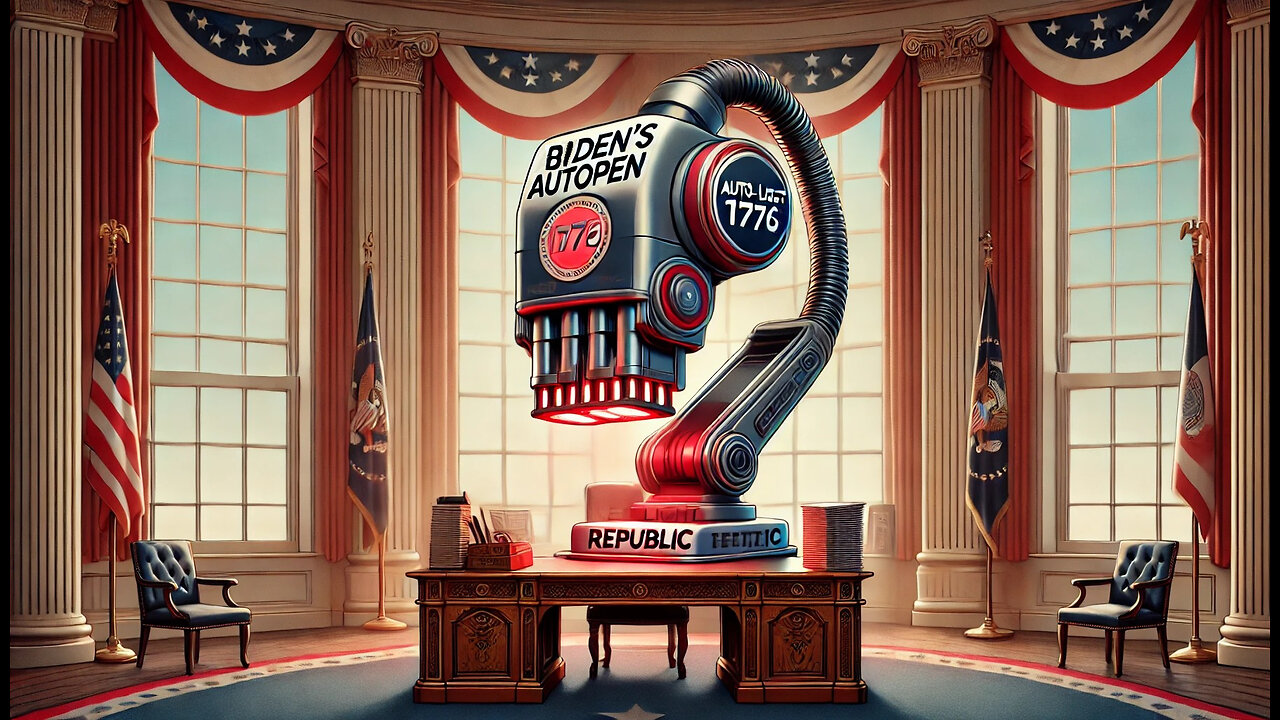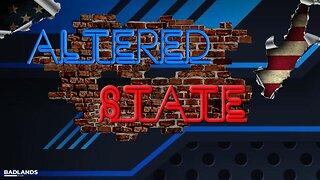Premium Only Content

What Is Joe Biden's Autopen Scandal?
The tale begins, as many do in the modern era, not with a bang but with a beep. A quiet mechanical arm, obedient and efficient, sweeps across parchment with robotic grace. In that moment, the President’s name is rendered—not written—with ink dispensed by automation, not intention. This is the autopen. And for some, this silent surrogate marks the unraveling of legitimacy itself.
In early 2024, reports surfaced suggesting that President Joe Biden had authorized a series of official actions—including pardons—using an autopen. While the use of such devices is not new, its deployment in the context of presidential pardons, which historically demand personal discretion and deliberate consent, ignited a storm of legal, philosophical, and political controversy. Critics claimed these pardons were invalid, arguing that the absence of the president’s physical hand rendered them void—mere specters of authority.
But like a match in dry brush, that one claim—the pen was guilty, the pardon fake—set fire to more than a single moment. It challenged the premise of authorship itself. What, after all, is a signature? Is it ink alone, or the deliberate act of a thinking being? If a machine can sign, can it also decide? If a ghost-written name carries the weight of law, where is the soul of democracy?
From this fissure emerged a dizzying cascade of doubt. If Biden’s signature was insufficient, what of Obama’s? George W. Bush’s? What of the Patriot Act, or drone authorizations, or financial bailouts scribbled under fluorescent light in hurried hours? What about executive orders from the War on Terror, or even pardons penned in proxy for soldiers and staff?
Suddenly, the entire architecture of modern governance seemed to rest on a fragile hinge: the authenticity of a hand. History, once bound in books, now flickered like unstable film—FDR’s New Deal, Lincoln’s Emancipation, Jefferson’s Declaration—all called into question by the cold fingers of a machine. Could it be that the Constitution itself, the foundational script of a nation, stood not on principle, but on penmanship?
The autopen scandal, at its heart, is not merely a matter of legal formalities. It is a crisis of metaphysics. It forces us to ask: What is the nature of authority? Can a nation be governed by signatures made in absentia? Can responsibility be delegated to gears and inkjets? Or must power, to be just, remain personal?
For some, the controversy is political theater—an attempt to delegitimize the decisions of a sitting president. For others, it is an overdue reckoning with the mechanization of governance, the ways in which bureaucracy and automation have hollowed the rituals of power. But for all, it is a story about trust. A people once bound by the belief that their leaders were present in the moment of choice now confront the terrifying possibility that no one was ever really there.
So the autopen sits, blinking silently in some forgotten cabinet of executive tools. It does not think. It does not feel. But it signs. And in its quiet industry, it reminds us that the symbols of legitimacy are never neutral. They must be chosen, not just produced.
We may yet decide that a signature is enough—that the will behind the machine is what matters. Or we may fall into deeper skepticism, where each document, each order, each law is just a trace of ghosts.
But until then, the machine waits.
And in that waiting, hums the fragile illusion of certainty.
-
 LIVE
LIVE
Inverted World Live
5 hours agoGiant Asteroid Skims Past Earth Today | Ep. 102
5,180 watching -
 LIVE
LIVE
TimcastIRL
2 hours agoTrump Kills 11 Narco Terrorists, Democrats Warn War With Venezuela Coming | Timcast IRL
6,799 watching -
 13:07
13:07
Robbi On The Record
3 days ago $4.35 earnedSweet Poison: The Big Fat Lie That’s Killing America
31.6K18 -
 LIVE
LIVE
Drew Hernandez
7 hours agoEPSTEIN VICTIMS SPEAK OUT & TRUMP DOUBLES DOWN
1,142 watching -
 1:36:41
1:36:41
FreshandFit
3 hours agoWe Are QUITTING YouTube...
23.1K24 -
 2:34:22
2:34:22
TheSaltyCracker
3 hours agoDrug Smugglers Blown Up 9-03-25
56.3K101 -
 LIVE
LIVE
VapinGamers
2 hours ago $0.49 earnedGrim Trials - Game Review/Playthru - Rougelight Dungeon Crawler - !rumbot !music
85 watching -

Mally_Mouse
9 hours ago🎮 Let's Play!! -- Jak 2 pt. 16
20.4K1 -
 52:23
52:23
MattMorseTV
4 hours ago $14.44 earned🔴The Cartels are SCREWED.🔴
89.6K102 -
 DVR
DVR
Badlands Media
17 hours agoAltered State S3 Ep. 44
29.6K